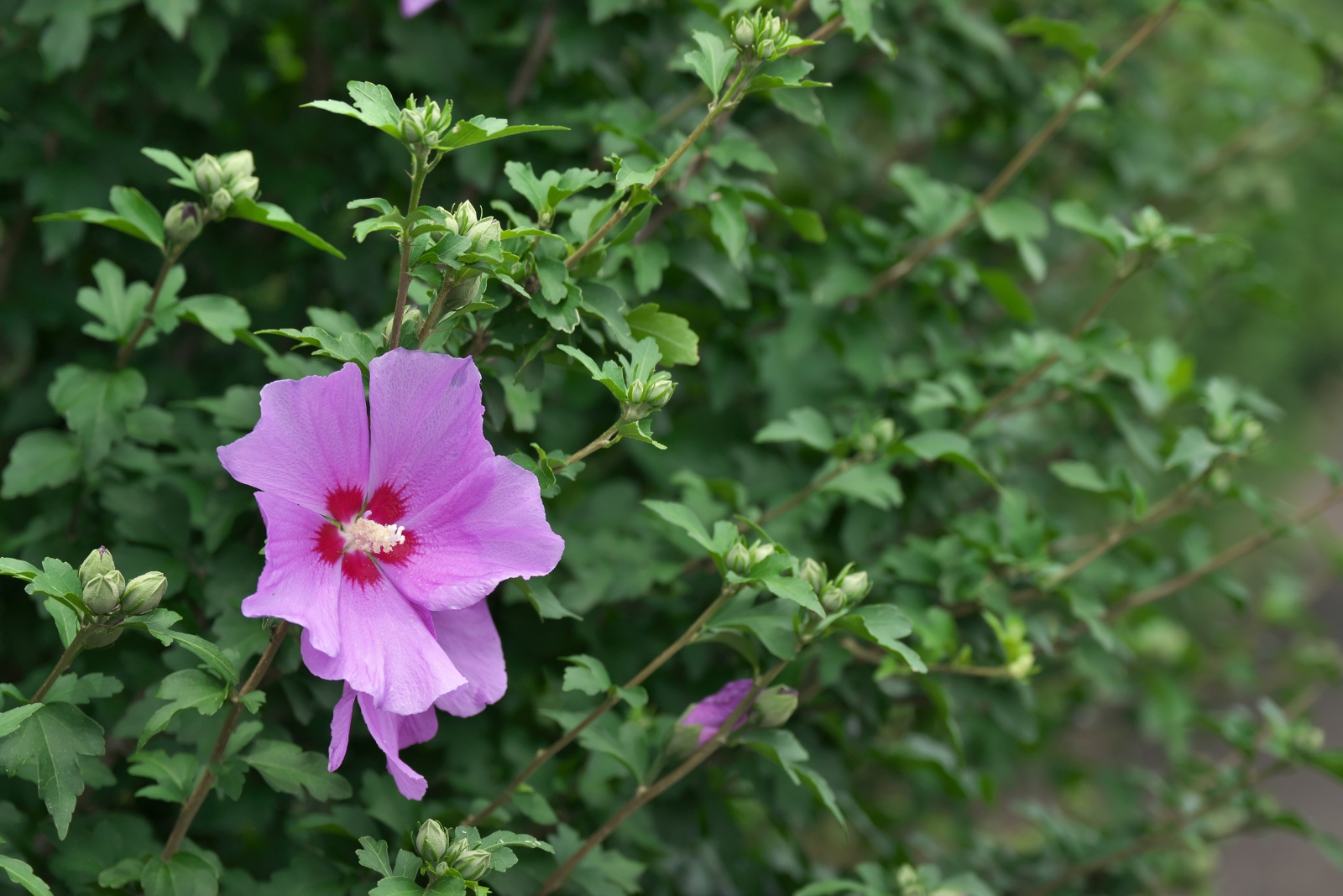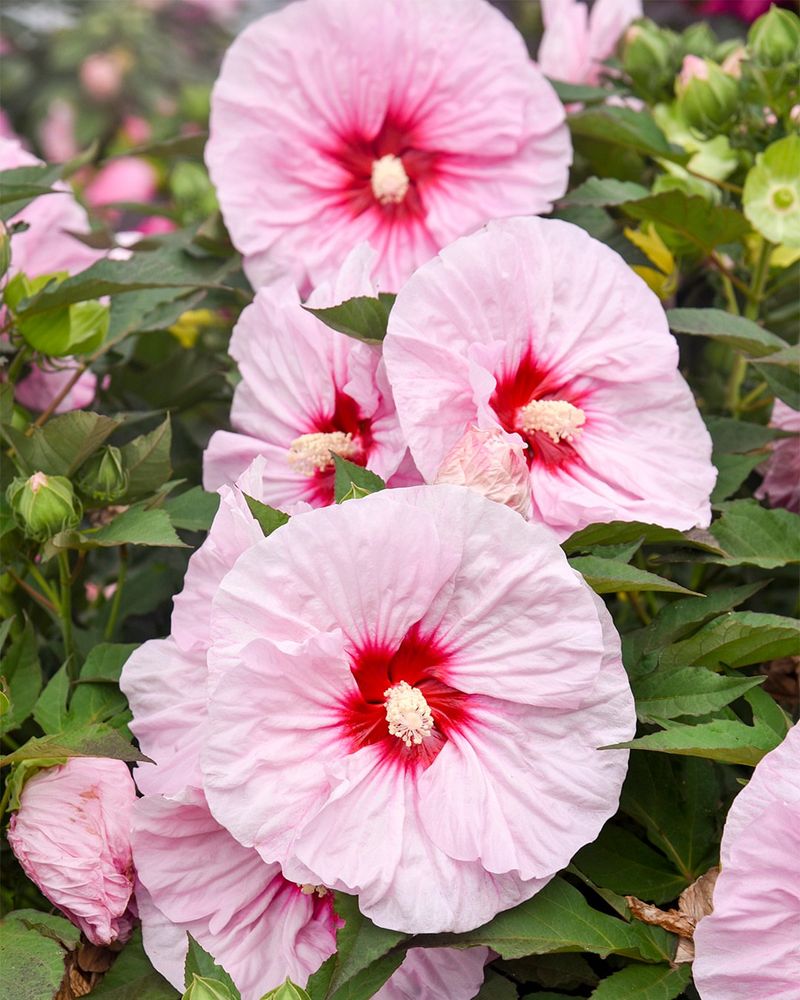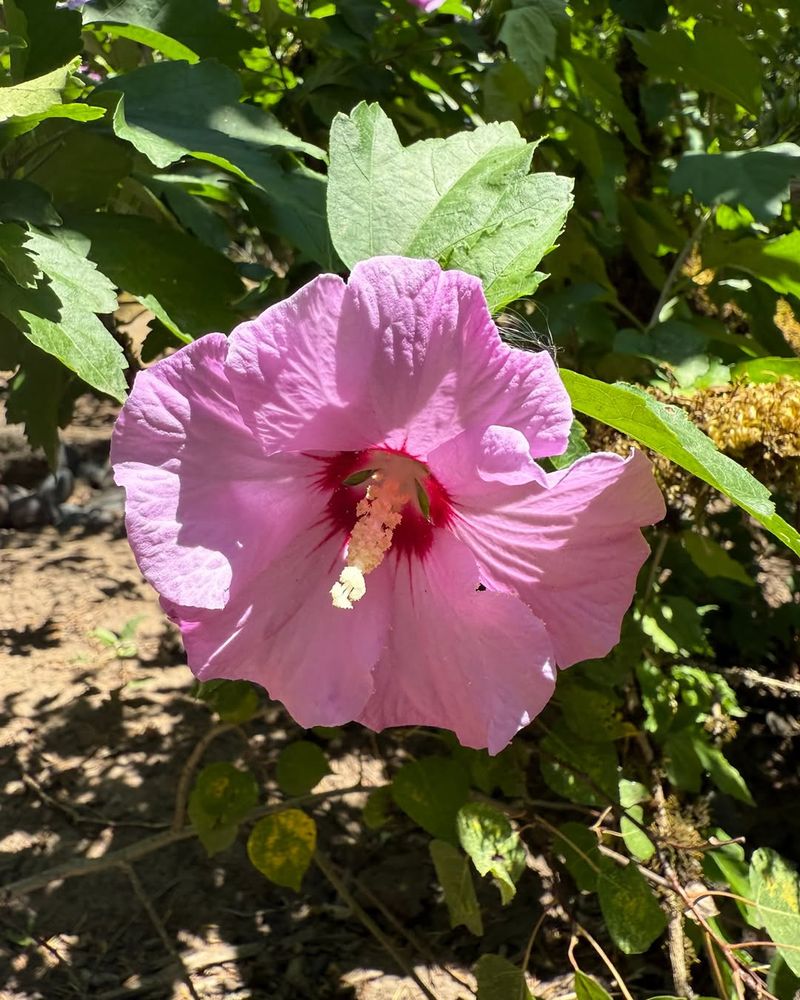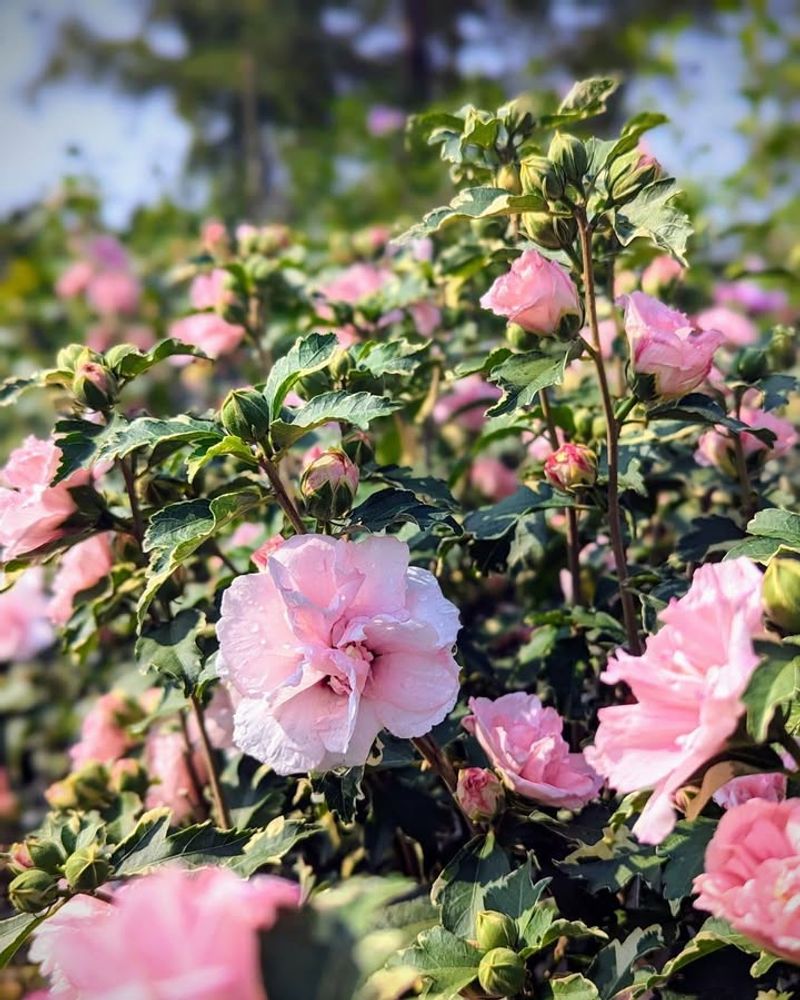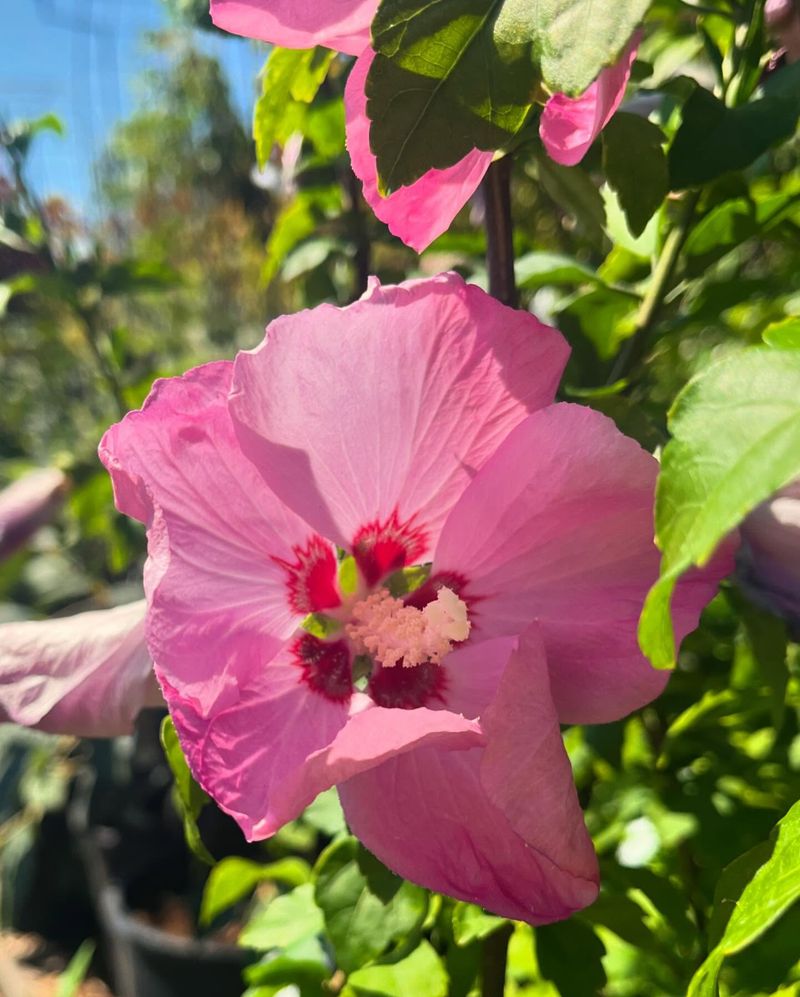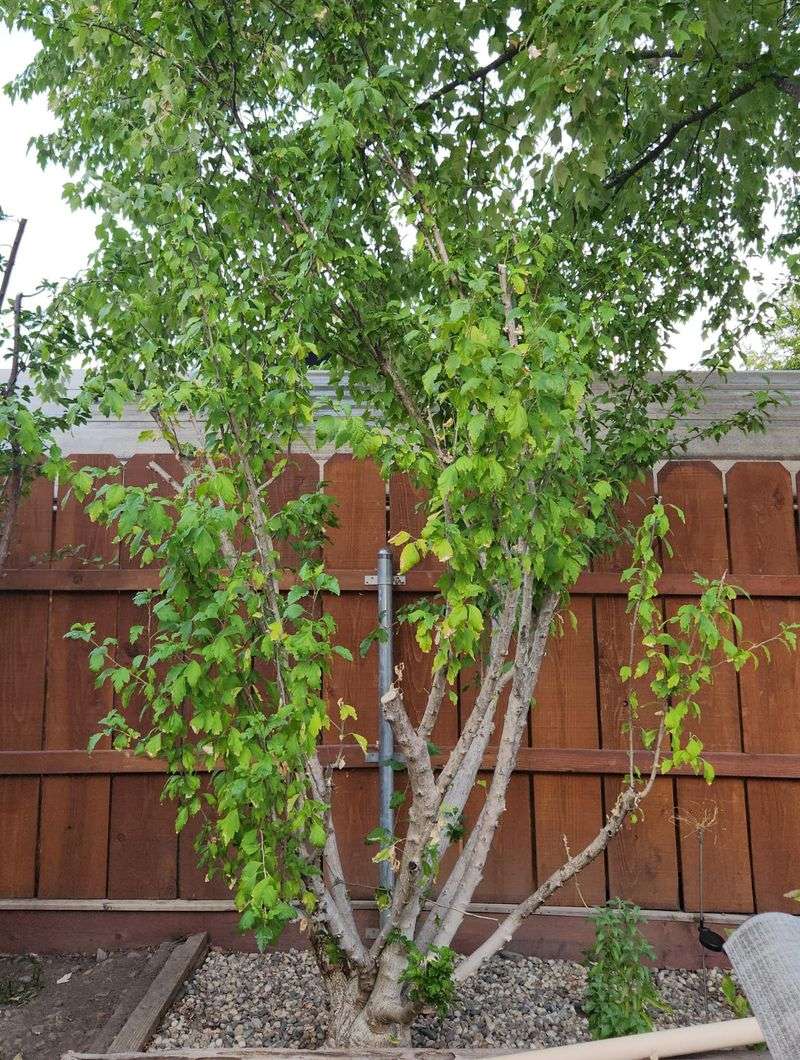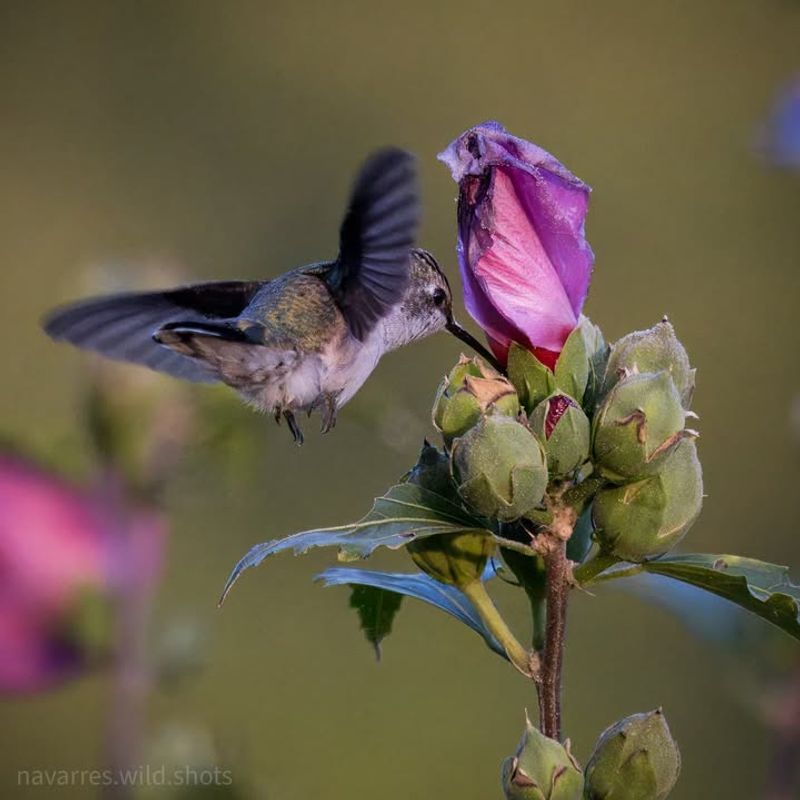Ohio gardens face all kinds of seasonal tests—late frosts, sudden heat waves, stretches of dry weather, and the occasional surprise storm. Yet some shrubs stand firm through it all, offering steady color right when the landscape needs a lift.
Year after year, this dependable bloomer returns as if it has something to prove, filling borders, hedges, and foundation beds with soft pink petals that look anything but ordinary. The reliable favorite Ohio gardeners continue to trust is Rose of Sharon.
1. Blooms Arrive Late In Summer When Other Flowers Fade
Most Ohio garden flowers finish blooming by mid-summer, leaving yards looking tired and brown. Rose of Sharon saves the day by producing gorgeous pink flowers from July through September.
While other plants struggle in the heat, this shrub keeps pumping out blossoms. Bees and butterflies love visiting these late-season blooms, making your garden buzz with activity when neighbors’ yards have gone quiet.
Expect hundreds of flowers on a mature plant each season.
2. Survives Ohio’s Unpredictable Winter Weather Without Protection
Ohio winters can be brutal, with temperatures dropping below zero and ice storms damaging plants. Rose of Sharon laughs in the face of cold weather, surviving even the harshest conditions without any special care.
You won’t need to wrap it in burlap or move it indoors like more delicate shrubs. Once established, the roots stay strong underground, and new growth appears every spring.
Even young plants bounce back from frost damage quickly and reliably.
3. Grows Quickly To Fill Empty Garden Spaces
Got a bare spot in your Ohio yard that needs filling fast? Rose of Sharon grows several feet each year once it gets going.
Within three years, a small nursery plant can reach six to ten feet tall, creating a beautiful privacy screen or focal point. Gardeners appreciate how this shrub fills in gaps without requiring years of patient waiting.
Fast growth means you’ll enjoy mature blooms sooner than with slower-growing alternatives like lilacs or hydrangeas.
4. Tolerates Different Soil Types And Growing Conditions
Not everyone has perfect garden soil, and Ohio’s clay-heavy ground frustrates many gardeners. Rose of Sharon adapts to whatever you’ve got, whether it’s heavy clay, sandy patches, or something in between.
It handles both sunny spots and partial shade reasonably well. You won’t need to buy expensive soil amendments or worry about pH levels like you would with picky plants such as azaleas.
Just plant it and watch it thrive with minimal fussing.
5. Requires Minimal Pruning And Maintenance Throughout The Year
Busy Ohio gardeners appreciate plants that don’t demand constant attention. Rose of Sharon falls into this easy-care category, needing only occasional trimming to maintain its shape.
You can prune it in late winter or early spring if it gets too large, but many gardeners skip this step entirely. Unlike roses that need deadheading and fertilizing, this shrub performs beautifully with neglect.
Water it during extreme drought, and you’ve covered your maintenance duties completely.
6. Attracts Hummingbirds And Pollinators To Your Backyard
Want to turn your yard into a wildlife haven? Plant a Rose of Sharon and watch the visitors arrive.
Hummingbirds zip between the trumpet-shaped blooms, while bumblebees and butterflies work the flowers from dawn to dusk. Creating habitat for beneficial insects helps your entire Ohio garden thrive, as these pollinators also visit your vegetable plants and fruit trees.
Kids love watching the constant activity around this shrub during peak blooming season.
7. Self-Seeds Readily, Providing Free Plants For Years
Here’s a money-saving secret: Rose of Sharon produces thousands of seeds that sprout into new plants around the parent shrub. Many Ohio gardeners dig up these volunteers and transplant them elsewhere in the yard or share them with friends.
You’ll never need to buy another Rose of Sharon after planting your first one. Some folks consider this aggressive seeding a nuisance, but pulling unwanted seedlings takes just minutes each spring.
Free plants make this trait worthwhile for most.

